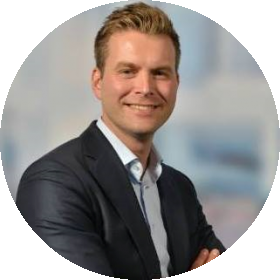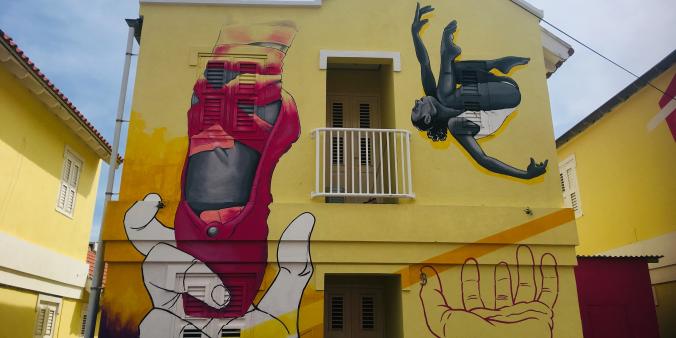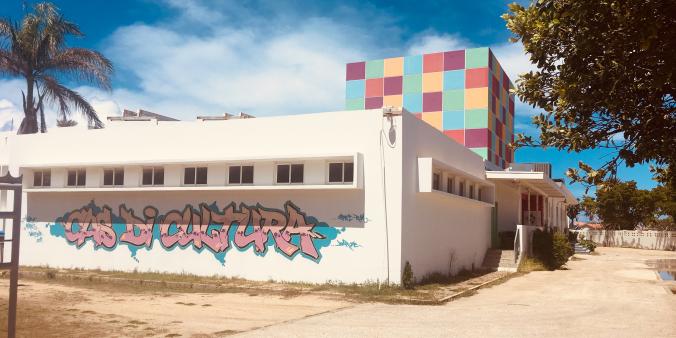
The Caribbean islands of Aruba, Curaçao, Bonaire, Sint Maarten, Sint Eustatius and Saba are fully eligible to participate in the Creative Europe programme. In practice, however, organisations and makers on the islands are not or barely able to find their way around the various schemes. In 2019 the Creative Europe desk visited Aruba and Curaçao and has regularly consulted with the islands since then. In 2022 it was time for a fresh visit, and so Jelle Burggraaff and Albert Meijer visited Aruba, Curaçao and Bonaire to give a presentation on each island and to talk to cultural organisations about the questions: what are the obstacles in the process? And what can the Creative Europe desk do to help with the process?
Cultural infrastructure
Aruba, Curaçao and Bonaire are islands with relatively few inhabitants, but with a rich culture. Each also has its own history and population makeup. Aruba obtained the ‘status aparte’ as a country within the Kingdom of the Netherlands in 1986. This status was also obtained by Curaçao and Sint Maarten in 2010. The other former Antillean islands – Bonaire, Saba and Sint Eustatius – became special municipalities of the Netherlands.
The cultural infrastructures vary per island, but the public authorities often do make small grant funds available. The authorities sometimes support organisations directly, but also finance smaller local funds which in turn distribute the resources among artists and organisations. Unfortunately, the available budget is very limited, the overhead costs are considerable, and the number of applications exceeds the number of funds available. This can spark rancour among the applicants; after all, the islands are small and everyone knows each other. Political affiliation also plays an important role on many of the islands. As a result, the cultural sector is sometimes undermined by cronyism or longstanding grudges. Many organisations on the islands say that you can only embark on internationalisation if you can stop worrying about your own continued existence. Yet the current cultural infrastructure on the islands appears to be insufficient to allow organisations to get beyond ‘survival mode’.
Cas di Cultura, as Aruba’s sole theatre, receives funding from the Ministry of Culture with the Aruba Cultural Directorate (Directie Cultuur Aruba) as policy monitor. But the organisation indicates that this also imposes limitations. “Obviously, we are grateful for the subsidy that enables us to fulfil this key position, but the application does eat up three months of my time every year,” says the director, Vicky Arens. This makes it difficult to develop long-term plans and durable cultural policy.
The cultural infrastructure is closely tied to the overall infrastructure. According to Arens, the physical distance to Europe and the need to buy expensive flight tickets to visit nearby countries imposes restrictions on the programming. Nevertheless, Cas di Cultura offers programmes that are eagerly embraced by the local population.
At the same time, the theatre is operating in survival mode like so many other organisations on Aruba. The building is dilapidated, there is a lack of personnel, and money is a perennial issue. “To think about internationalisation is a luxury we cannot afford in terms of time and energy, certainly not when it concerns a Creative Europe application,” Arens explains.
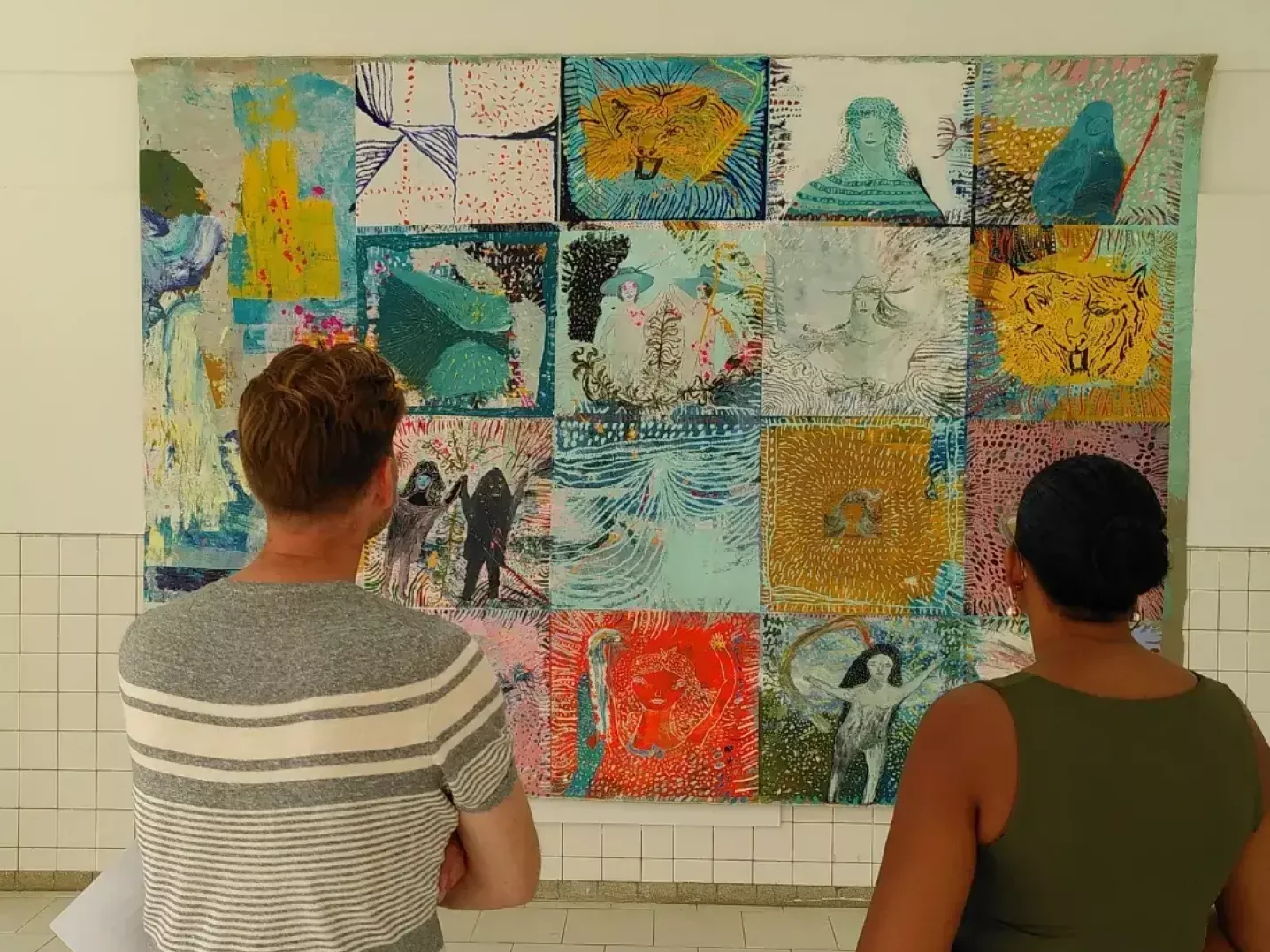
That is why many organisations on the islands are not focussed on international collaboration. One exception is Ateliers ’89 on Aruba: a culture hub where children and adults meet up to make art, with workshops run by well-known makers. They organise the international project Caribbean Linked, enabling makers from across the Caribbean region to come together for a residency, and to give or follow workshops. When asked about international funds such as Creative Europe and Archipel.eu, Ateliers ’89 says that these are not on the radar. They also lack the writing skills, so that it would be better if a partner organisation were to look after the application.
Own power
The lack of policy and funding doesn’t stop the organisation of large-scale projects, however. For instance, the annual Kaya Kaya festival on Curaçao is praised for its regenerative impact on Otrobanda, a poorer district of Willemstad. Each year the festival is held in a different part of Otrobanda, for which buildings are freshly painted to create a positive feel and to improve economic opportunities. Funding for Kaya Kaya comes from different sources. For example, there is a partnership with a paint company, and foreign makers are given flight tickets through a partnership with an airline company. The Curaçao Tourist Board also contributes, recognising it as a ‘destination event’, but this is not structural. There is a similar initiative on Aruba, and the Aruba art fair has the potential of becoming an international festival. So far it lacks the necessary financial support, however.
The public authorities appear to not fully realise the power that such initiatives represent, also in economic terms. The various Tourist Boards do offer some funds, sometimes even offered by specific hotels, but then it’s usually about culture for tourists, instead of for the local population. The cultural calendar is also aligned with this purpose: for instance, events on Curaçao such as North Sea Jazz and IFFR Curaçao are often scheduled in the low season, with support from the Tourist Board, in order to encourage tourists to stay during this season. The authorities tend to view culture as a tourist product. The term ‘orange economy’ (an economy that runs on creativity, with roots in art, culture, research and science) is mentioned several times on the islands, but this ideal does not have much priority.
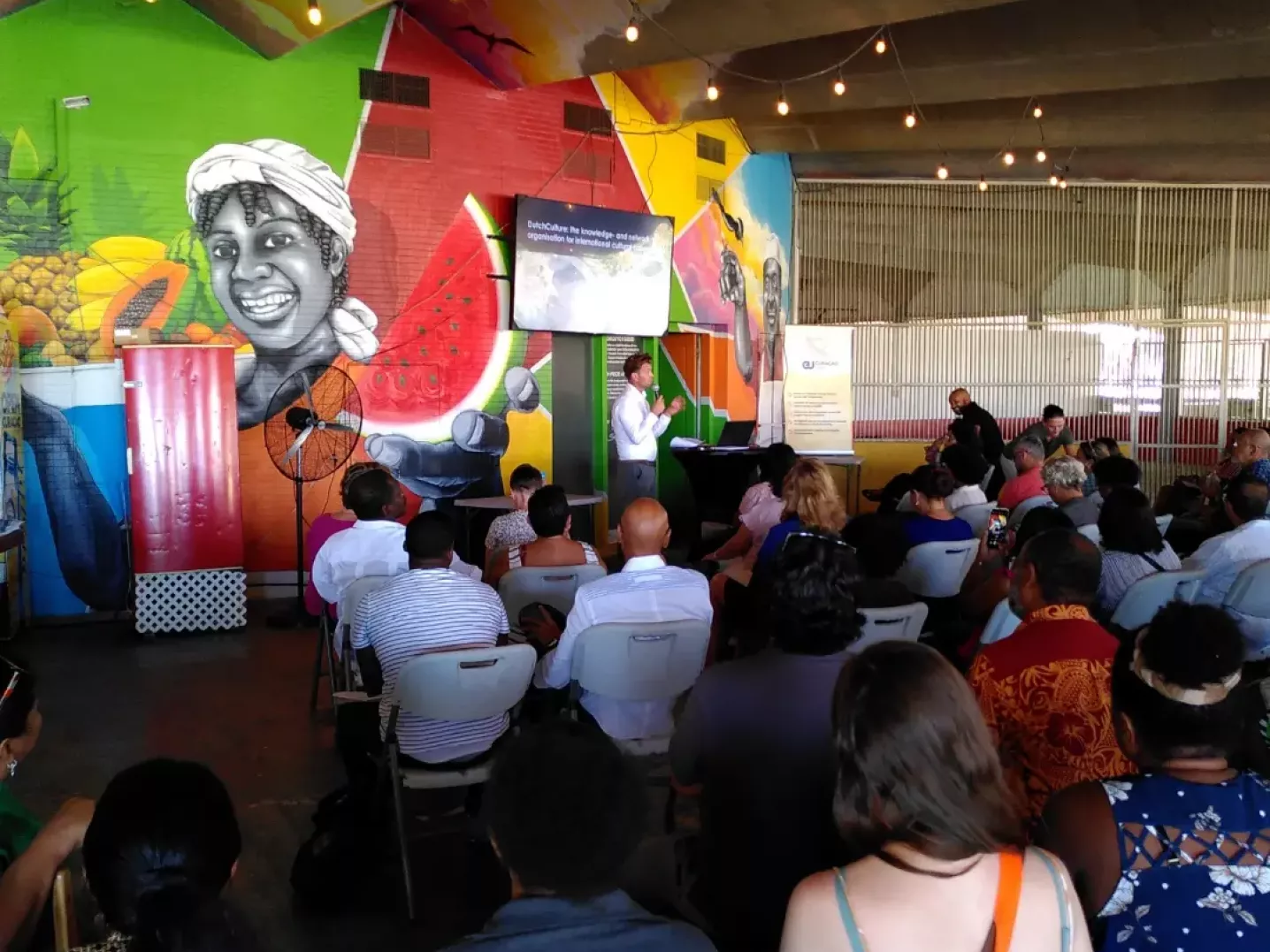
Collaborating with the European Netherlands
Barely any parties on any of the islands have the time to draw up a Creative Europe application. It is an investment with uncertain returns, and for organisations struggling to survive, it is too much of a gamble. Besides, the Creative Europe programme is mainly geared to collaborating with European countries, while the local makers and organisations that do operate internationally mainly do so with respect to the Caribbean region, or with the European Netherlands.
“For us, Curaçao-Netherlands definitely is an international collaboration,” says film commissioner Eloise van Wickeren, who promotes Curaçao as a location for audio-visual productions. She emphasises that most of the existing lines to Europe are with the Netherlands, but these connections are not recognised as international collaboration by Creative Europe or DutchCulture because the islands are a part of the Kingdom of the Netherlands. This means that the islands are eligible for grants by the Dutch cultural funds, but these are largely unfamiliar among local parties. Van Wickeren: “The gap between the local sector and the funds is too large, and the logic applied by these funds sometimes doesn’t fit with the way things work on the islands.”
In an attempt to somewhat bridge the gap, the state funds have launched a pilot in which the Prins Bernhard Cultuurfonds Caribisch Gebied (PBCCG) operates as a match maker, helping applicants on the islands to connect with a fund that suits their initiative. Melanie Sloot, chef de bureau at the PBCCG: “Connecting the cultural sector on the islands with the grant schemes of the state funds implies a number of significant challenges. First there’s the matter of communication: news needs to be spread across six islands, and many parties are unable to find you online, so you need multiple channels and resources. And then the criteria that are applied are fully based on the infrastructure in the Netherlands. Culture makers on the islands develop in different ways and create different sorts of projects. Partnerships, budgets and goals are not comparable.”
In the pilot, Sloot is the only point of contact for all six islands and all sectors, which comes on top of her regular work. As she explains: “There is lots of information that local makers want to get and understand. Right now, the only way to link them up is to refer them to the state funds, but it would work so much better to have a temporary physical desk here where people can request information and can immediately be supported in the application process, if they are eligible for subsidy. It would probably also help if the state funds were to join forces to create one or two general schemes for the Caribbean region, which can then be used to find out exactly who needs what kind of support.”
European cultural policy geared to the Caribbean region
Cultural policy in the Caribbean area has now become more of a priority on the agenda of the European Netherlands. All sorts of things are happening, besides the pilot described above. For example, since recently all the islands convene with the European Netherlands once a year in the so called Vierlandenoverleg Onderwijs, Cultuur en Wetenschap. Recently, Boekmanstichting’s magazine #128 was fully devoted to culture in the Caribbean part of the Kingdom. In September, state secretary Uslu signed a cultural covenant with the Public Authorities of Bonaire, Saba and St. Eustatius aimed at collectively improving the cultural infrastructure on these islands.
At a European level, too, there is more attention for the so-called Overseas Countries and Territories (the OCTs, which includes the six islands of the Kingdom) and for the Outermost Regions (ORs, which are parts of EU countries that tend to remain off the radar on account of their location, such as Guadeloupe, Madeira and the Azores). To this end, in 2021 the European Commission launched the pilot programme Archipel.eu, enabling cultural and creative organisations to apply for funding for projects in the fields of mobility, networking, and immaterial cultural heritage. Recently, On The Move, the European organisation specialised in international cultural mobility, published a report on cultural mobility within these OCTs and ORs.
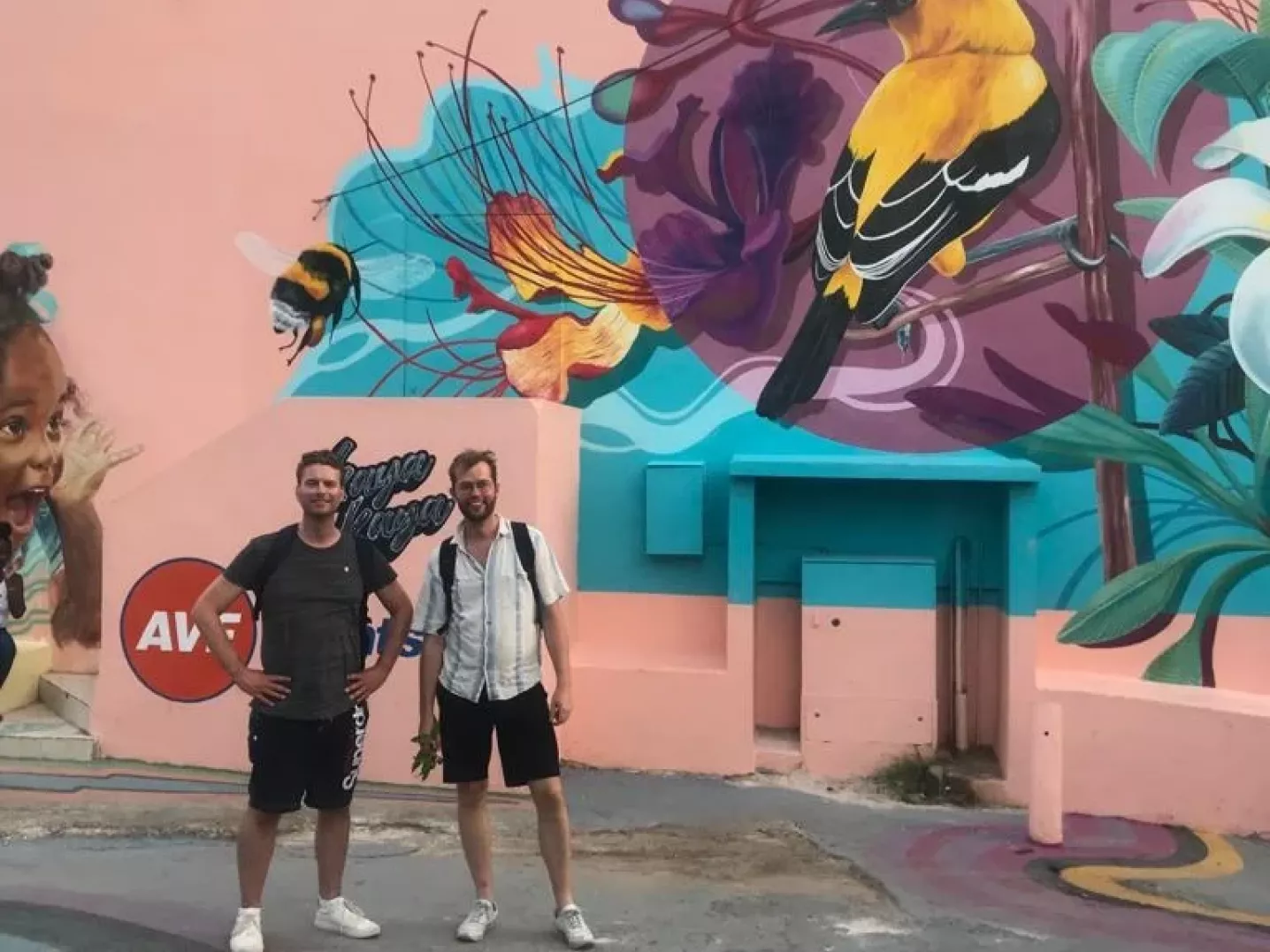
One of the organisations to receive funding through Archipel.eu is Fundashon Históriko Kultural Boneriano (FuHiKuBo). This foundation, established by the well-known Bonaire inhabitant Boi Antoin, used the funding to make a documentary about the unique carnival culture on Bonaire and other islands. “FuHiKuBo is just a small organisation,” says Antoin’s daughter-in-law and co-worker Emma Pratt, “and this scheme required a lot of complicated paperwork. The available money is also geared especially to projects, while what we really need is structural support for further professionalisation and digitisation.”
Richenel Ansano, former director of Curaçao’s anthropological and archaeological museum NAAM and facilitator for UNESCO Intangible Heritage, agrees. “The problem is the lack of continuity. Fortunately, we do see favourable developments among the state funds, but things move slowly. Project funding remains relevant of course, but it is far more important to work on capacity building, collaboration programmes, sustainable infrastructure and supporting processes.”
Ansano disputes the often-heard comment that there is a lack of (capable) application writers. “The main issue is that nobody knows we exist!” He does acknowledge that many writers perform the work free of charge, or are only paid if the application is successful. Organisations like Centro pa Desaroyo (CEDE) Aruba would therefore like to see the creation of a writers’ pool, linked to the network fund. As a societal organisation, they would also like to offer support as a partner – a role they have some experience with within the Erasmus+ programme.
Creative Europe: a quick refresher
It hasn’t yet been announced whether the Archipel.eu will have a follow-up, but organisations on the islands are fully eligible to apply to Creative Europe, the seven-year programme for the cultural and creative sector. The programme consists of the subprogrammes MEDIA (for the audio-visual sector), Culture (for all other sectors), and the smaller cross-sectoral schemes. With the EU member states each pursuing their own cultural policy, Creative Europe serves as a complementary facility to finance projects requiring international collaboration in areas such as sustainability, digitisation and inclusiveness. This often comes with the condition attached that the collaboration involves at least three organisations from three participating countries (aside from the EU member states, many other European countries as well as the OCTs and ORs participate). The Creative Europe Desk NL offers advice on collaboration options to applicants in the Netherlands and in the Caribbean part of the Kingdom.
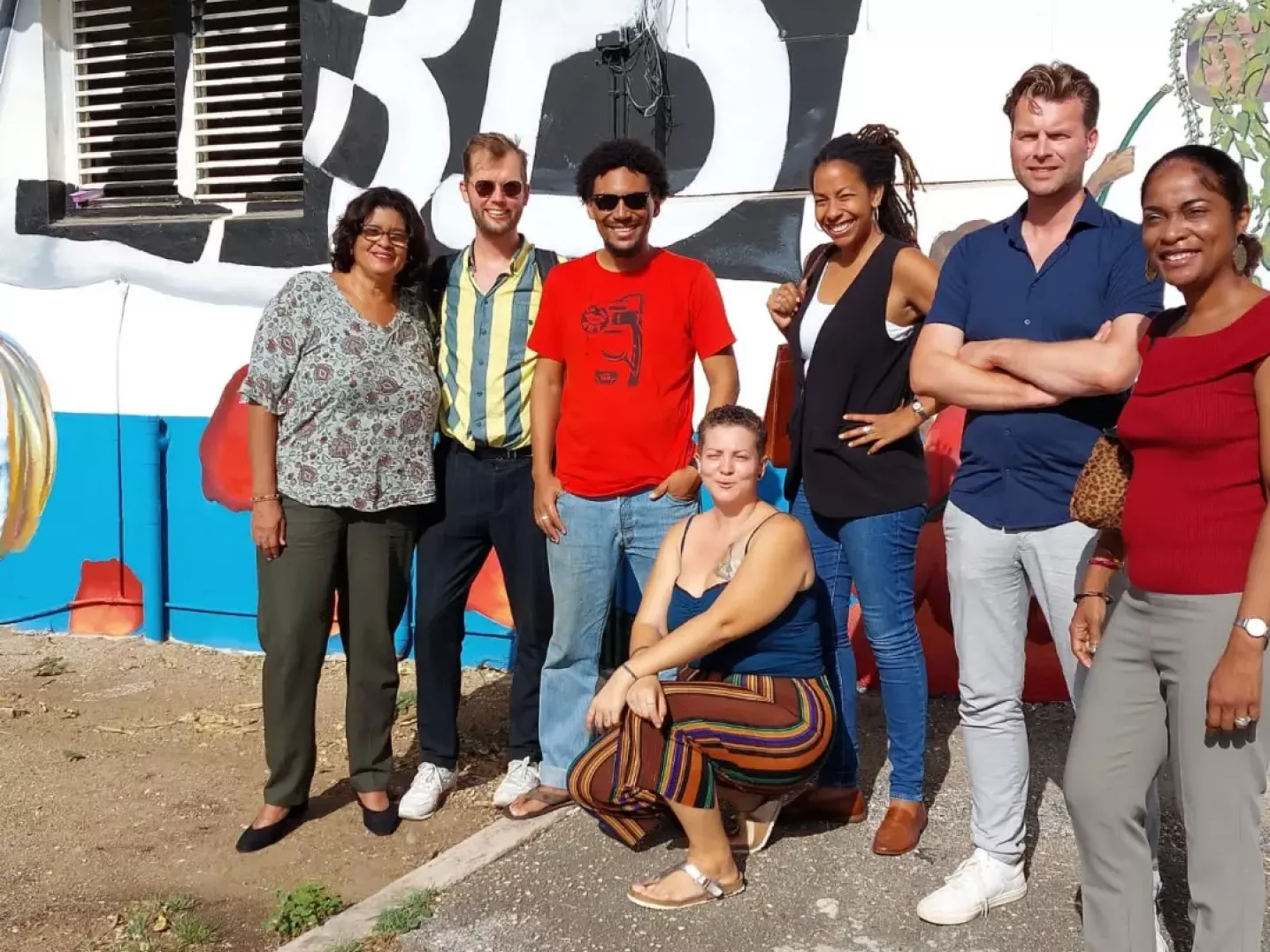
Based on the conversations that we as Creative Europe Desk NL | DutchCulture conducted on the islands, we mainly see funding opportunities in Creative Europe Culture, and then specifically the scheme for European collaborative projects, and then especially for the more established organisations on the islands. The Archipel.eu pilot could serve as a stepping stone here. For example, Wintertuin Curaçao is running an Archipel.eu project called Konta bAI, in which they experiment with artificial intelligence in poetry. They are now looking into setting up a collaborative project on Creole languages.
Organisations can apply for a collaborative project as project leaders, but certainly, for organisations with little administrative staff, it might be wiser to first join an initiative as a project partner. A European network is essential for this, but we see that there aren’t many organisations on the islands that have such a network. The Terramar Museum on Bonaire is the first party we met who is a member of networks supported by Creative Europe: museum network NEMO and cultural lobby network Culture Action Europe. For Terramar this could lead to a partnership for a Creative Europe application.
One option for smaller organisations and individual makers is to further look into the new mobility programme, Culture Moves Europe. This programme reimburses (part of) travel expenses, accommodation and other expenses incurred for a visit to another participating Creative Europe country. Participants from OTCs and ORs may receive a small top-up for the travel expenses.
Practical tips for participating in the Creative Europe programme:
- First make sure that your idea is suited to one of the schemes. Remember that the programme is mainly geared toward long-term international exchanges and collaboration, and is less suitable for smaller projects. Based on the conversations we had, the most suitable scheme for most of the organisations on the islands is the scheme for European cooperation projects.
- First aim for the role of project partner. We recommend this especially for organisations that never applied for Creative Europe funding before. This way you can avoid carrying final responsibility for the project application and implementation, but you do acquire experience.
- No (large) international network yet? Then first browse around the networks supported by Creative Europe and consider joining.
- For individual makers and culture professionals, the new mobility programme Culture Moves Europe is most accessible.
- Seek advice from the Creative Europe Desk NL and subscribe to our newsletter for the latest news and publication of the schemes.
For further information and in case of any questions, don’t hesitate to contact our Creative Europe Culture Advisor Albert Meijer.
This article was written with the input from conversations with parties including:
Aruba: CEDE Aruba; Go Cultura; Cas di Cultura; Osaira Muyale; Directie Cultuur Aruba; Europe House Aruba; Leerorkest Aruba, ArtisA, Ateliers ’89, Cine Aruba, Club di Movimiento; Fundashon Museo Arubano
Bonaire: Openbaar Lichaam Bonaire; Rijksdienst Caribisch Nederland; Leerorkest Bonaire, Fundashon Historiko Kultura Bonairiano; Sekshon di Kultura, Arte I Literatura (SKAL); Terramar Museum; Mangazina di Rei; NGO Platform
Curaçao: EU Desk Curaçao; Kaya Kaya; Dutch Caribbean Architects and Engineers; Prins Bernhard Cultuurfonds Caribisch Gebied; Museo Pal’i Maishi; Museo Tula; Europe Direct Curaçao; Ministerie van Economische Ontwikkeling Curaçao; Eloise van Wickeren; Mongui Maduro Museum, Richinel Ansano, Emmly Francisca, Monumentenzorg; Monumentenfonds; Teatro KadaKen, Herman van Bergen, Wintertuin Curaçao, Sharelly Emmanuelson; Instituto Buena Bista, Art Foundation Curaçao; Fundashon Bon Intenshon; Curaçao Tourist Board; Amak, School of Music, Leerorkest Curaçao, Muziek & Cultureel Centrum Curaçao
